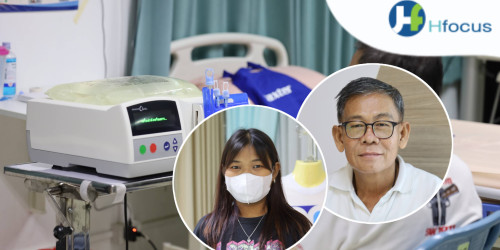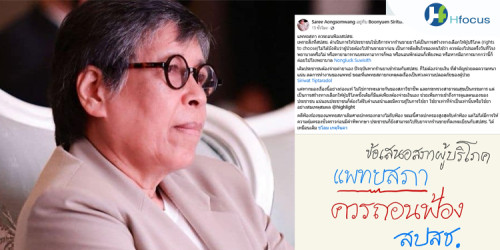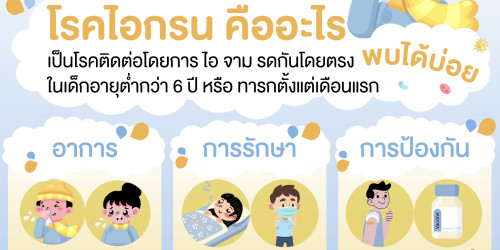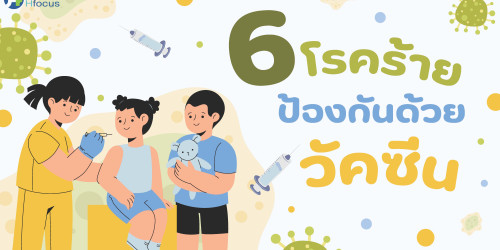The Public Health Ministry is worried that infectious diseases already wiped out in Thailand could make a comeback as neighbours rush in. Upgrading community hospitals nationwide is a big part of the government's efforts to revamp the country's public health system ahead of the establishment of the Asean Community in 2015.
The Public Health Ministry started implementing the project at the start of this year.
It is worried that several epidemic and infectious diseases that have already been wiped out of the country would make a comeback once the Asean region becomes practically borderless.
The ministry pledged to its community hospitals along the border that it would he lp improve their medical services, provide modern equipment and initiate disease control and prevention programmes.
State hospitals in Songkhla's Hat Yai district (near Malaysia), Chanthaburi ( near Cambodi a), Kanchan aburi (near Myanmar), and Ubon Ratchathani and Chiang Rai (near Laos) are strategic locations that the government will transform into border health hubs. The hospitals in these areas are in process of being upgraded.
The recent spread o f diphtheria in Thailand has added w eight to the ministry's concerns regarding the reemergence of epidemic and infectious diseases.
The disease had been wiped out from Thailand for more than 30 years.
Four people died and 79 were infected by the disease late last year. Most of the infections took place in Loei, a border province.
The disease is passed from person to person by droplet transmission, usually by breathing in diphtheria bacteria after an infected person has coughed or sneezed.
The public has criticised the government, saying that perhaps the diphtheria vaccine still cannot be accessed in remote areas even though it has been available in Thailand since 1981.
Another more likely theory is that the disease was brought into Thailand by citizens of neighbouring countries.
The ministry used the diphthe ia outbreak as the occasion to announce that it would upgrade community hospitals along border provinces.
Permanent-secretary for public health Narong Sahamethapat says he is also concerned about the re-emergence of some infectious diseases along the border.
But Dr Narong said he believed the Asean Community will be an opportunity rather than a threat because authorities can use it as a reason to speed up fixing chronic problems in the border public health system, such as an overload of migrant patients and high risk of diseases being spread.
More than 250 million baht has been paid each year to provide free medical service to migrants who can't afford the services fee at border health centres, he said.
The ministry recently came up with an idea of an affordable health insurance package for migrants a 1-baht-a-day package for a child and a 10-baht-a-day package for a family (5 baht for a father, 4 baht for a mother and 1 baht for a child) to relieve the fnancial burden on border community hospitals, Dr Narong said.
Meanwhile, he said border community hospital executives must also desig n their own disease control and prevention programmes to distribute vaccine s an d spread awareness to reduce the risk of contagious diseases being brought into Thailand.
However, this is only one of many responsibilities that border community hospitals need to take care of, he said.
Dr Narong said the spectre of the Asean Community has prompted Thailand's health services to prepare for market expansion to increase capacity to support newcomers.
The Asean Community gives priority to the flow of skilled professionals under Mutual Recogniti on Arrangements (MRAs). It enables the qualifcations of service suppliers recognised by relevant authorities in their home country to be mutually recognised by other signatory member states.
Eight professions that are recognised under the MRAs signed by 10 Asean members are doctors, surveyors, architects, engineers, dentists, nurses, accountants and those working in tourism.
But the agreement does not support the free flow of unskilled labour, who are often classifed as a risk group of disease carriers due to poor health services in their own countries.
The control of immigration is expected to be as strict as it is today.
"I think the Asean Community will not suddenly make changes to the Thai public health system," said Viroj Na Ranong, research director for Health Economics and Agriculture of the Sectoral Economics Programmme at the Thailand Development Research Institute (TDRI).
TDRI conducted research last year on the fears revolving around the Asean Community including the claim that it would lead to an influx of people and found most of them to be illusionary.
Based on a 2010 workers database from the Foreign Workers Administrations Office, TDRI estimates that 1.18 million migrants are from Asean countries.
The flow of migrants is a normal phenomenon that has nothing to do with the Asean Community, the institute claims.
Although it will not have a large impact on the Thai public health system, Mr Viroj believes the false alarm of migrants bringing in diseases will remain. Some academics predict the changes will bring about a crisis of medical staff shortages in community hospitals.
"In such competitive circumstances, I think community hospitals need to come up with ideas on how to use available human resources effciently," said Worawit Tantiwattanasap, director of Umphang Hospital in Tak province.
Umphang hospital has only 4 physicians available for more than 60,000 residents 60% Karen, 30% Thai and 10% Myanmar.
Due to its isolation it is 10 km from the Thai-Myanmar border and 164 km from the nearest city young, ambitious physicians are not likely to remain there.
With limited human resources, the hospital has operated a mobile clinic to provide necessary vaccines to residents along the Thai-Myanmar border.
The initiative benefits from good collaboration with locals who pass along doctors' knowledge of disease control and prevention to villagers, said Dr Worawit.
"In the context of having limited resources, the mobile clinic is a ver y important method," said Dr Worawit.
Similarly in Chiang Rai province, the patients of Chiangkhong Crown Prince Hospital, located 1.5km from the Thai-Lao border, are particularly susceptible to infectious diseases such as diphtheria and bird ฿u.
It is easy to cross the border her e through the Mekong River, which means 10% of the hospital's patients are Lao and tribal people.
More than 250 Lao mothers give birth at the hospital in each year.
The hospital has succeeded in controlling and preventing diseases even though available medical staff is limited.
"Good relationships with Lao medical staff is the key," said Dr Somprat Munjit, the hospital's director.
The hospital's medical staff has been in close contact with doctors from Bokeo hospital, located 500m from the border inside Laos, since 2003 due to collaboration in an HIV/Aids control and prevention programme.
As a result, Thai public health staff are always alert to the detection of infections in Laos, and they quickly prepare health measures and vaccine.
To produce more physicians, a scholarship programme is in place here enabling doctors who have recently graduated to be trained as specialists in return for pledging to work at the hospital once their training is completed, Dr Somprat said.
Chiangkhong local Somkid Phuusatan, 52, said: "We need more physicians to guarantee our better health".
Source: Bangkok Post June 24, 2013
- 4 views








